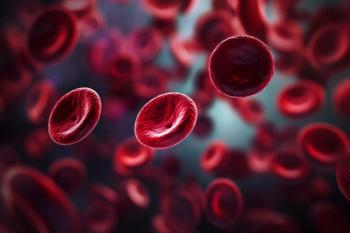
Patients on Dupixent Experience Temporary Increase in Eosinophil Levels
The increases had no impact on the efficacy of the drug and were rarely associated with symptoms or sequelae.
Clinical trials of Dupixent (dupilumab) in patients with asthma, chronic rhinosinusitis with nasal polyps (CRwNP) and atopic dermatitis (AD) has identified temporary increases in blood eosinophil counts. However, these increases had no effect on the efficacy of Dupixent, researchers found.
The findings were
The increases in eosinophil counts seen in trials often happen in the first few weeks of treatment before returning to baseline or even lower. The researchers gathered data from 11 trials of Dupixent in adults and adolescent patients. There were 6642 patients analyzed, of which 3145 had AD, 2876 had asthma, 574 had CRSwNP, and 47 had eosinophilic esophagitis (EoE).
For the asthma trials, the researchers identified transient increases in eosinophils in the QUEST, DRI, and VENTURE studies among patients taking Dupixent but not the placebo groups. Eosinophils had risen by week 4 of the study for patients on Dupixent while counts remained at baseline levels for the placebo group. Those elevated counts generally decreased starting at week 24.
Patients in these 3 studies could continue on in TRAVERSE. In the extension study, patients had taking Dupixent in QUEST continued on the drug and their eosinophil counts continued to decline. However, patients on placebo in QUEST who transitioned to Dupixent had no increase in eosinophil counts. Patients rolling into TRAVERSE from DRI had a 16-week gap. Both patients who had been on placebo in DRI and those on Dupixent had an increase in eosinophil counts from baseline to week 4. The increase was resolved by week 24. Finally, patients continuing from VENTURE who were on Dupixent had a decline in counts while those on placebo initially had an increase from baseline to week 24 before declining and reaching baseline levels by week 96.
In trials for CRSwNP, patients taking Dupixent in SINUS-24 and SINUS-52 also had higher mean eosinophil counts compared with placebo. Elevated counts were observed at week 16 before decreasing starting at week 24. By the end of SINUS-52, counts were below baseline.
In AD, there was a slight increase in eosinophil counts for patients taking Dupixent starting as early as week 4 in SOLO-1 and SOLO-2; however, counts had declined to baseline by week 8. In CHRONOS there was a slight increase in eosinophils by week 8, but this dropped to or below baseline starting with week 12.
The researchers reported no increase in eosinophil counts for patients with EoE in Dupixent trials. However, the authors noted that there were a limited number of patients in the EoE and “data from larger-scale phase 3 studies remain to be assessed.”
Overall, the temporary increase in eosinophil counts were rarely associated with any clinical symptoms or sequelae. Patients with asthma and CRSwNP saw their counts either return to baseline or below baseline after the first 24 weeks. In AD, patients had transient increases that were not reflected in median fold-change from baseline, “indicating that these increases were generally observed in patients with higher baseline eosinophil counts,” the authors wrote.
They suggested a need for additional studies to better understand why responses differed among the disease, particularly in AD compared with the airway diseases. They also noted that Dupixent’s efficacy, based on these results, is not linked to changes in blood eosinophil counts. Instead, the drug’s efficacy is related to blocking interleukin (IL)-4 and IL-13 signaling.
“While these increases are mostly transient, clinician discretion should be used to monitor patients suspected of having an eosinophilic condition,” the authors concluded.
Newsletter
Get the latest industry news, event updates, and more from Managed healthcare Executive.


















































